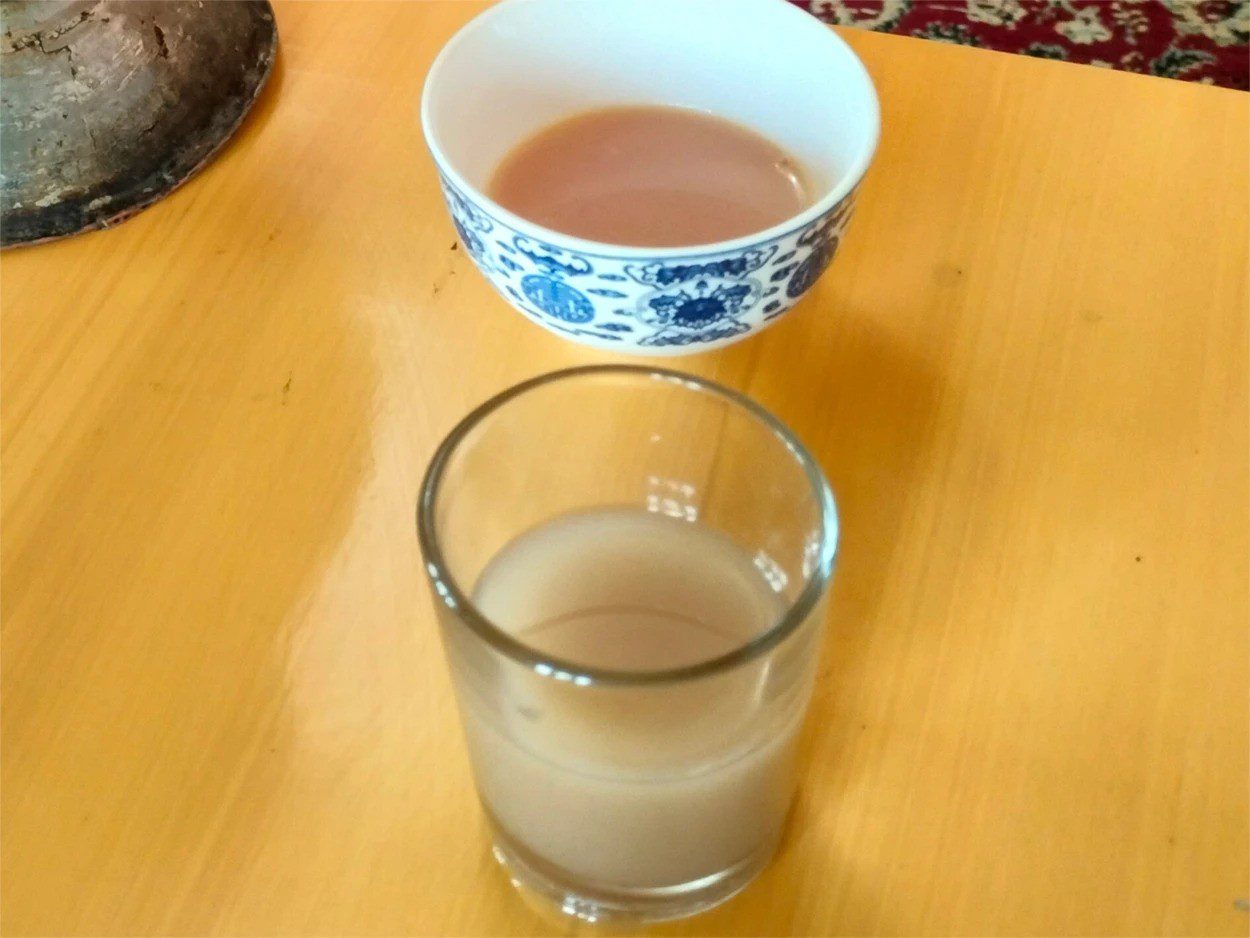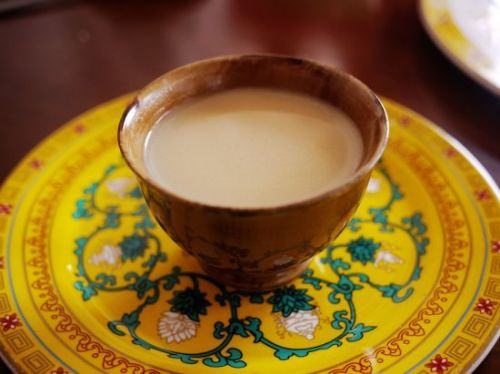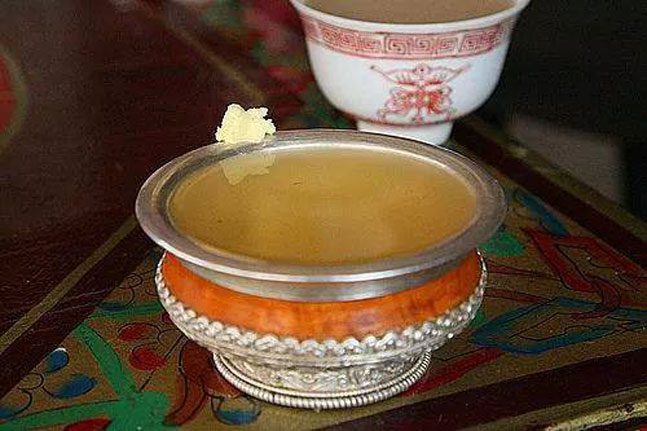Chang beer is a perfect example of how fermentation, a process that has fascinated cultures worldwide for centuries, has given rise to unique beverages rooted in local ingredients and climate conditions. In the high-altitude region of Ladakh, nestled in the Indian Himalayas, the Ladakhi people have perfected their method of brewing Chang beer, a traditional barley-based drink. What makes this brew so distinctive is the process of high-altitude fermentation, where the region’s thin air and cold climate play critical roles in shaping the flavors and fermentation dynamics. In this post, we’ll explore how Ladakhis brew their traditional Chang beer and delve into the science behind high-altitude fermentation.
Understanding Chang Beer: The Traditional Ladakhi Brew
What Is Chang Beer?
Chang beer is a traditional alcoholic beverage of Ladakh and neighboring Tibetan regions, made primarily from fermented barley. It is often compared to Tibetan barley beer or Tibetan chhaang, but Chang holds its own unique place in Ladakh’s cultural landscape.
Typically served at room temperature in wooden or metal bowls, Chang is a mild alcoholic drink with a cloudy appearance and a slightly sour taste. It is a staple in Ladakhi households, consumed during festivals, family gatherings, and religious events. Not just a drink, Chang beer is a symbol of hospitality in Ladakh, where offering a guest a bowl of Chang is a mark of respect and welcome.
Ingredients Used in Brewing Chang Beer
The recipe for Chang is simple, but the process of making it at high altitudes involves intricate knowledge passed down through generations. The key ingredients are:
- Barley: The main ingredient, locally grown in Ladakh.
- Yeast: Sourced from local strains that are adapted to the cold and low-oxygen environment of the Himalayas.
- Water: Pure glacial water from Ladakh’s mountain streams, which adds to the unique flavor profile.
- Millet or rice (occasionally used): In some regions, millet or rice might be added to the mix for a variation in flavor.
The brewing process begins with malting the barley, where it is soaked, germinated, and then dried to create malted barley. The grain is then fermented using indigenous yeast strains.

Cultural Significance of Chang in Ladakh
Chang is more than just an alcoholic drink; it plays a pivotal role in Ladakhi culture. It is served at important festivals such as Losar (Ladakhi New Year) and religious ceremonies. Offering Chang to a guest is considered a gesture of hospitality and is often accompanied by a traditional Ladakhi toast.
Moreover, the brewing process itself is often a community activity. Families prepare large batches of Chang for special occasions, and its preparation is considered an art passed down through generations. It binds the community together and reflects Ladakh’s deep connection to its natural environment.
The Science Behind High-Altitude Fermentation
What Is High-Altitude Fermentation?
High-altitude fermentation refers to the process of fermenting beverages or foods at elevations significantly above sea level. At higher altitudes like Ladakh, which sits over 11,000 feet, the environment introduces unique challenges to fermentation.
- Lower oxygen levels: Oxygen is a crucial factor in fermentation, especially for the yeast. At higher altitudes, oxygen levels are lower, which can slow down fermentation and affect yeast performance.
- Cold temperatures: The cold temperatures of the Ladakh region, particularly during the winter months, can further slow down the fermentation process, requiring Ladakhis to adjust their methods to ensure the yeast remains active.
- Lower boiling points: The reduced atmospheric pressure at high altitudes means that water boils at lower temperatures. This affects how ingredients, especially barley, are cooked and how flavors are extracted during the brewing process.
The Role of Altitude in Chang Beer Fermentation
Altitude plays a significant role in the production of Chang beer. The thin air, low oxygen, and cold temperatures mean that the fermentation process occurs more slowly than it would at lower altitudes. However, this slower fermentation allows for more complex flavors to develop, giving Chang its distinctive taste.
- Yeast activity: At higher altitudes, yeast strains must work harder to convert sugars into alcohol due to the reduced oxygen levels. This can lead to a longer fermentation time, but the payoff is a richer and more nuanced flavor profile.
- Alcohol content: The slower fermentation process at high altitudes can lead to variations in alcohol content, making Chang a relatively mild alcoholic beverage compared to other fermented drinks.
Temperature and Fermentation in Ladakh’s Climate
Ladakh’s climate, with its harsh winters and cool summers, heavily influences the fermentation process. Cold temperatures can inhibit yeast activity, slowing down the conversion of sugars into alcohol. To combat this, Ladakhis traditionally brew Chang in warmer, insulated rooms during the winter months.
The temperature fluctuations during the brewing process are carefully monitored by Ladakhi brewers, who adjust the brewing environment as needed. This hands-on approach helps them maintain consistent fermentation despite the challenges presented by their environment.
The Step-by-Step Process of Brewing Chang Beer in Ladakh

Preparing the Barley for Fermentation
The first step in brewing Chang involves preparing the barley. The barley is soaked, allowed to germinate, and then dried to create malted barley. This malted barley is then roasted to bring out the grain’s natural sweetness.
In Ladakh, the barley preparation is often done by hand, using traditional methods that have been passed down through the generations. The process of malting and roasting gives Chang its characteristic flavor.
The Fermentation Process in High-Altitude Conditions
After preparing the barley, it is boiled and mixed with water to create a mash. This mash is left to cool before being inoculated with local yeast strains. The yeast begins the process of breaking down the sugars in the barley, converting them into alcohol.
At high altitudes, this fermentation can take longer than it would at sea level, sometimes lasting several weeks. Ladakhi brewers monitor the fermentation closely, ensuring that the yeast remains active despite the low oxygen levels and cold temperatures.
Aging and Storing Chang Beer
Once the fermentation is complete, the beer is typically left to age for several more weeks to develop its full flavor. Chang is often stored in traditional clay or metal containers that help maintain the desired temperature.
The final product is a mild, slightly sour beer that is enjoyed both warm and cold. Ladakhis often consume Chang during celebrations and festivals, sharing it with friends and family.
Brewing Traditions and Modern Adaptations in Ladakh
Traditional Ladakhi Brewing Techniques Passed Down Through Generations
The methods used to brew Chang have remained largely unchanged for centuries. Indigenous brewing techniques such as hand-malted barley, the use of local yeast strains, and the cold, slow fermentation process have been passed down from generation to generation.
Each family may have its own unique twist on the brewing process, whether it’s the specific yeast strain they use or the way they store the beer during fermentation. This has created a rich tapestry of brewing traditions that make Chang a truly unique beverage.
How Ladakhis Adapt Brewing for Modern Challenges
While many Ladakhi brewers stick to traditional methods, some have started incorporating modern techniques to improve consistency and control over the brewing process. These adaptations include:
- Using temperature-controlled fermentation chambers to ensure a steady fermentation process despite the extreme climate.
- Experimenting with different barley varieties and yeast strains to produce new flavors.
Brewing Chang Beer at Home: A Modern Guide
For those interested in brewing Chang at home, it’s possible to replicate the process with some modifications. Adjustments must be made for altitude, temperature, and yeast activity if brewing outside of Ladakh.
- Use high-quality malted barley.
- Maintain a cool, consistent temperature during fermentation.
- Adjust the fermentation time based on the environment, keeping in mind that Chang requires longer fermentation at high altitudes.
Health Benefits and Risks of Chang Beer

Potential Health Benefits of Chang Beer
Like many fermented beverages, Chang beer may offer some health benefits when consumed in moderation. The fermentation process produces probiotics, which can aid in digestion. Additionally, barley is rich in fiber and antioxidants, which contribute to heart health.
Risks and Considerations When Drinking Chang Beer
However, it’s important to remember that Chang is still an alcoholic beverage, and excessive consumption can lead to health risks. The alcohol content of Chang is relatively mild, but at high altitudes, alcohol can affect the body more intensely.
Ladakhis traditionally drink Chang in moderation during festivals and ceremonies, ensuring that it remains a social beverage rather than a health risk.
Why High-Altitude Brewing is Gaining Global Attention
The Global Trend of High-Altitude Fermentation
Recently, there has been growing interest in high-altitude fermentation in the global craft beer community. The unique challenges and flavors associated with brewing at high altitudes are drawing attention from brewers worldwide.
In fact, some breweries have started experimenting with high-altitude yeast strains and colder fermentation environments to replicate the flavors found in beers like Chang.
How Chang Beer Contributes to the Craft Beer Movement
Chang beer, with its deep cultural roots and unique brewing process, is beginning to gain recognition beyond Ladakh. As part of the larger movement toward craft brewing, Chang is seen as an example of how traditional brewing techniques can offer something new and exciting to modern beer enthusiasts.
Conclusion: The Future of Chang Beer and High-Altitude Brewing
Chang beer is a testament to the ingenuity of the Ladakhi people, who have adapted their brewing methods to thrive in one of the most challenging environments on Earth. The process of high-altitude fermentation has created a beverage that is not only delicious but also deeply rooted in Ladakhi culture.
As more people become interested in the art of brewing and the unique flavors that come from high-altitude fermentation, Chang beer may continue to grow in popularity, bringing with it a greater appreciation for Ladakh’s rich cultural heritage.
Q&A Section
What is high-altitude fermentation, and how does it differ from regular fermentation?
High-altitude fermentation occurs at elevations above sea level, where reduced oxygen levels and lower temperatures slow down the fermentation process. This often results in longer fermentation times and unique flavor profiles.
Can Chang beer be brewed outside of Ladakh?
Yes, Chang beer can be brewed outside of Ladakh, but adjustments need to be made for temperature and altitude. Home brewers may need to replicate the cold, low-oxygen environment of Ladakh to achieve the same flavors.

What ingredients are essential for brewing Chang beer?
The key ingredients for Chang beer include barley, water, and yeast. Occasionally, millet or rice may be added for flavor variation.
How does altitude affect the alcohol content in Chang beer?
At higher altitudes, fermentation is slower due to lower oxygen levels, which can result in variations in alcohol content. Chang is generally mild in terms of alcohol percentage.
Is Chang beer healthier than other alcoholic drinks?
Chang, like other fermented beverages, may offer some health benefits due to its probiotic content and barley’s nutritional value. However, moderation is key, as excessive consumption of any alcohol can be harmful.
How long does it take to brew Chang beer?
The brewing and fermentation process for Chang can take several weeks, depending on the altitude and environmental conditions. High-altitude fermentation generally requires a longer fermentation period than sea-level brewing.









